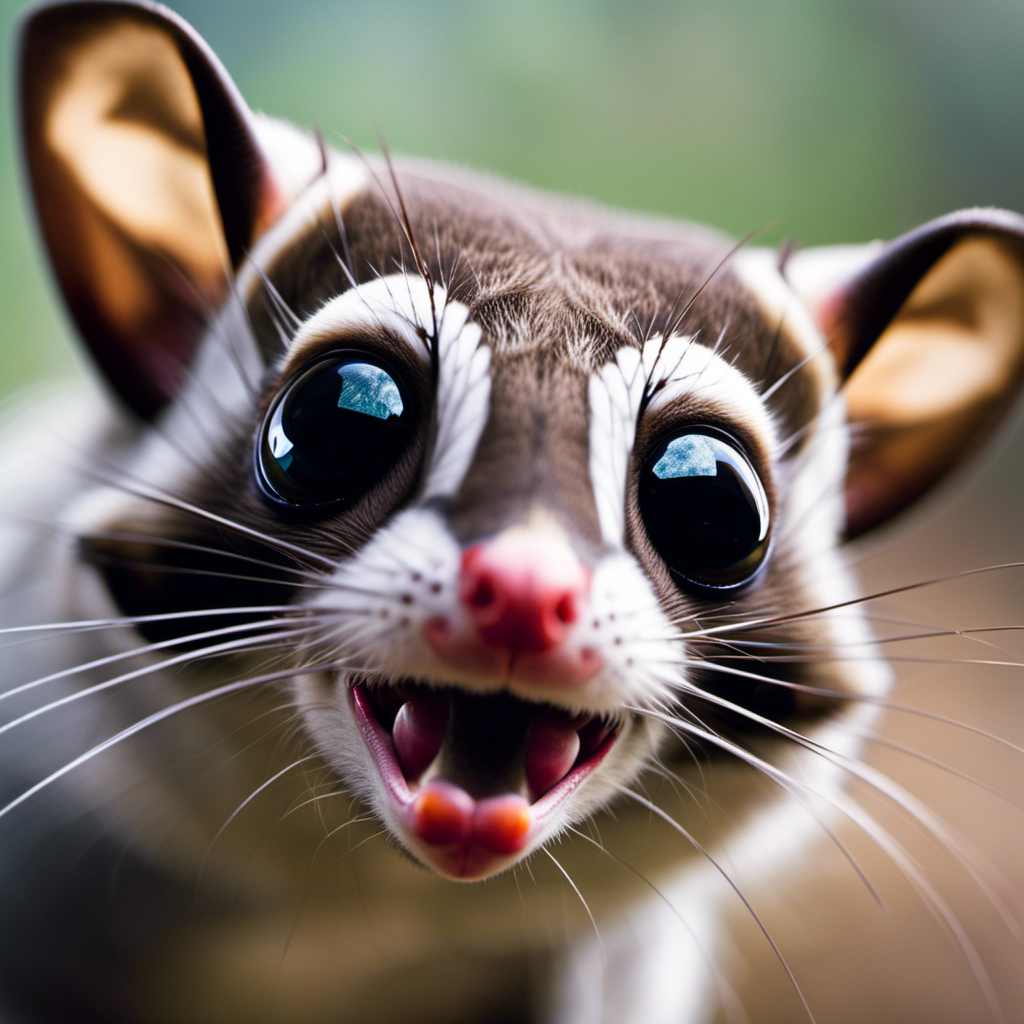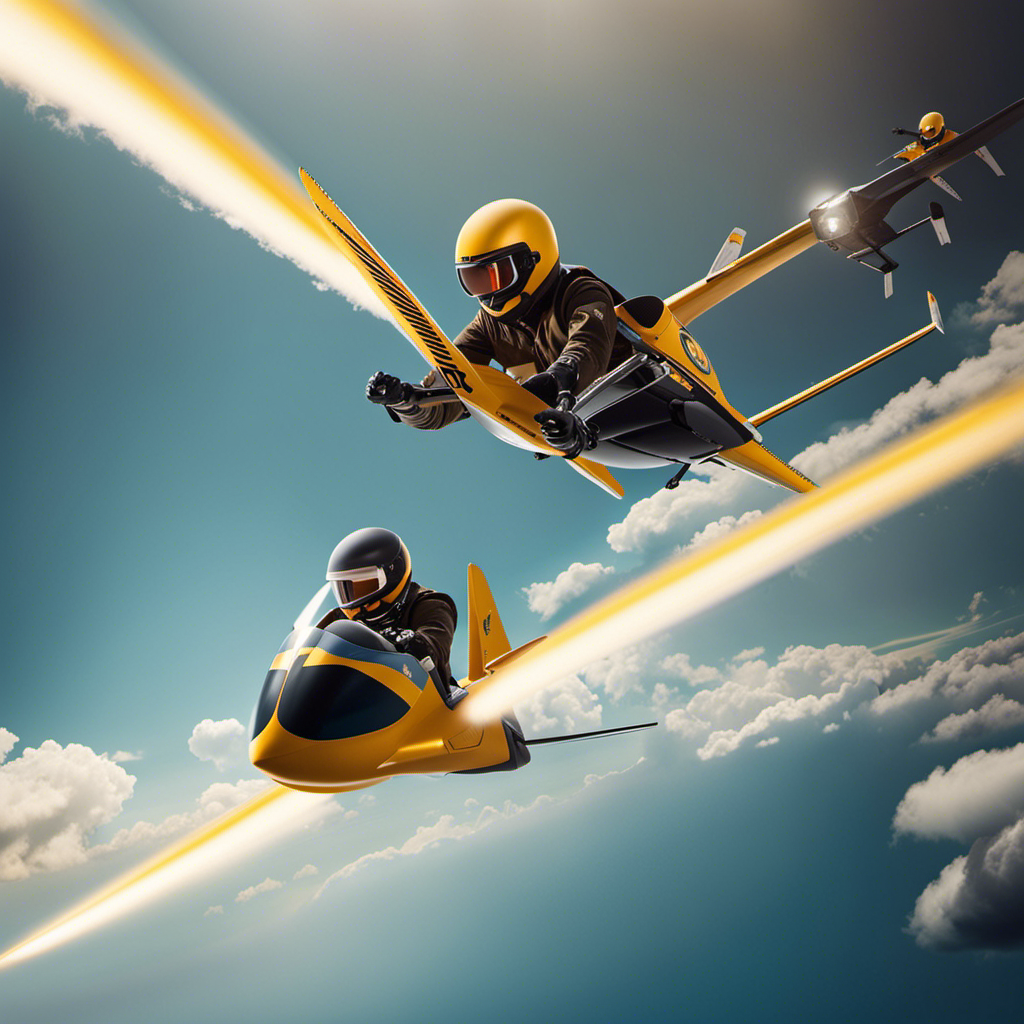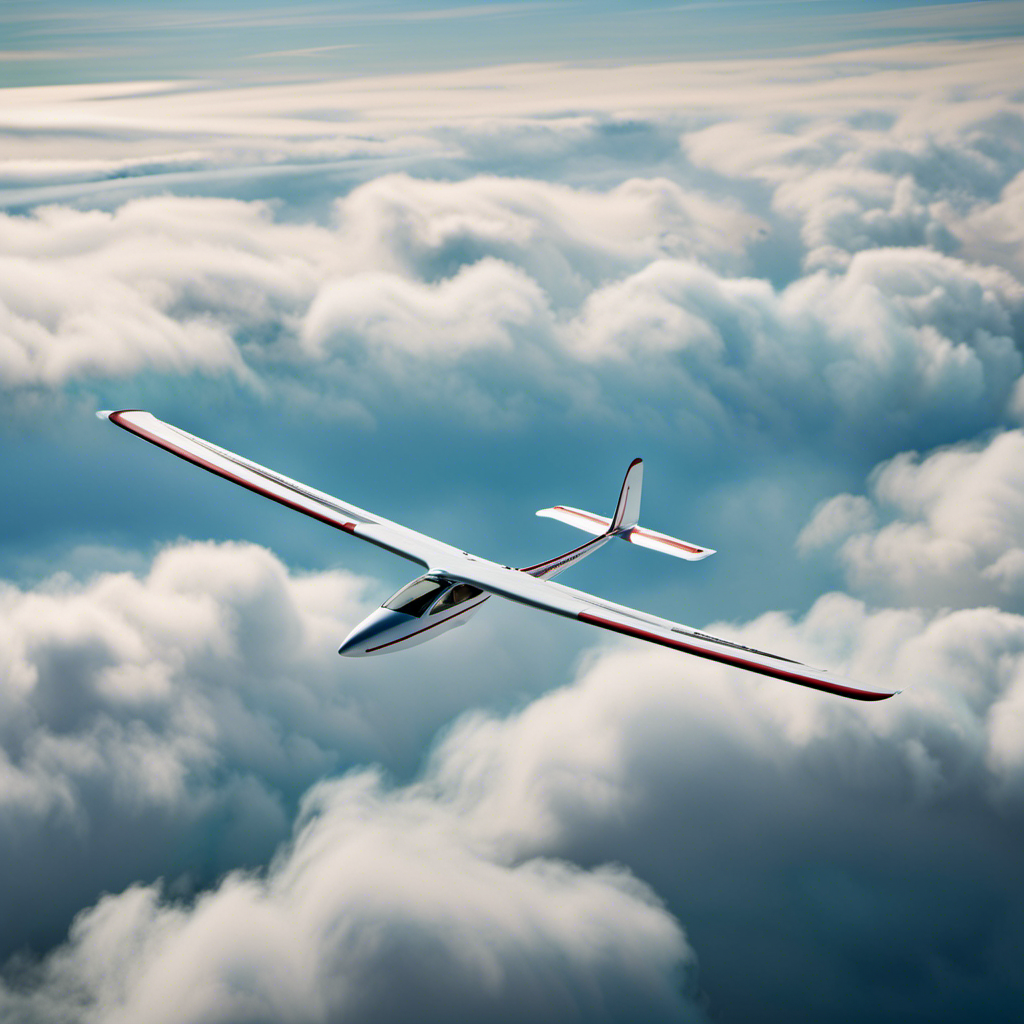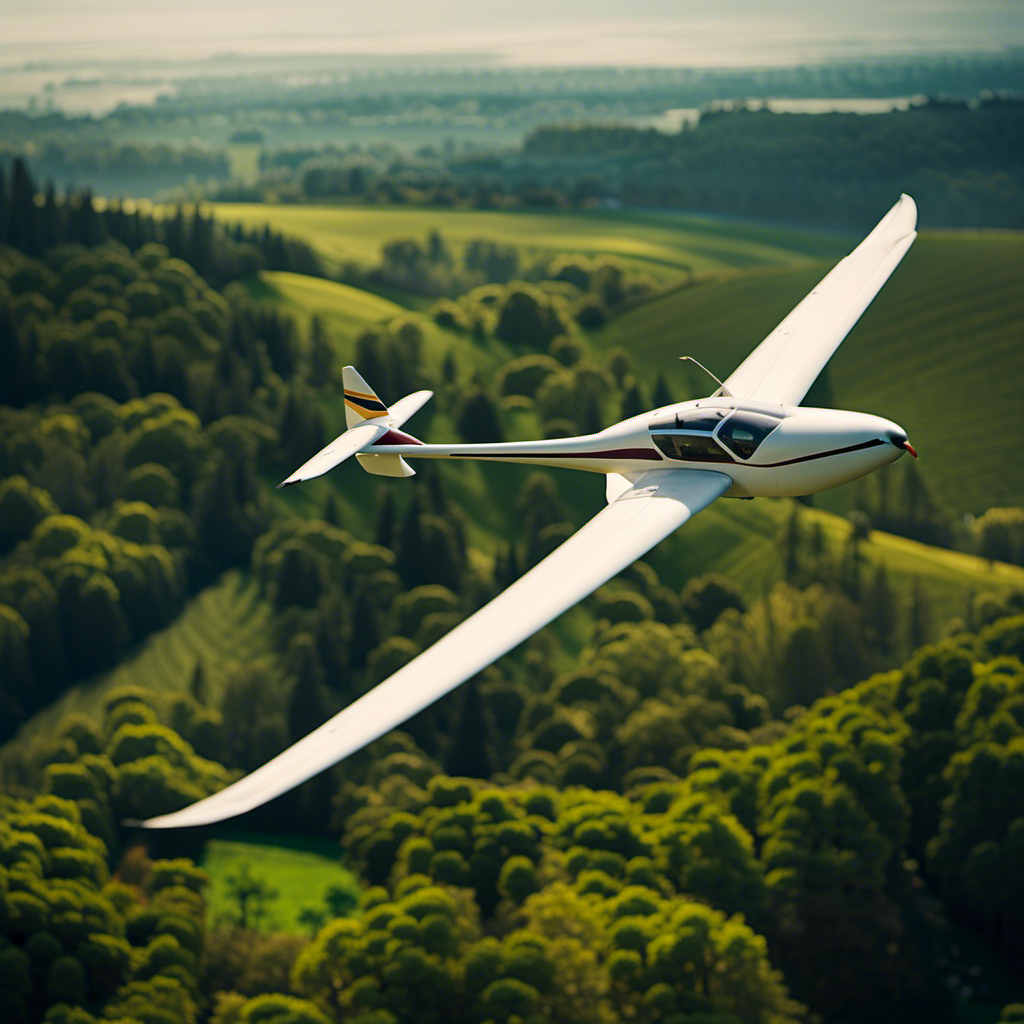When I first brought my sugar glider home, I was immediately charmed by its adorable appearance and playful behavior. However, I soon discovered that these tiny creatures are capable of delivering a surprisingly powerful bite!
In this article, I will delve into the question that many sugar glider owners ask: do sugar gliders bite a lot? Using my firsthand experience and evidence-based research, I will explore the factors that may influence biting, signs of aggression to watch out for, and effective techniques for training and taming these delightful pets.
Key Takeaways
- Understanding behavior crucial for managing potential biting behavior
- Building trust and bonding through consistent and patient interactions
- Setting boundaries and respecting personal space to prevent unwanted biting
- Gentle and understanding approach for a deep connection and to reduce the likelihood of biting
Understanding Sugar Glider Behavior
Do sugar gliders bite a lot?
Well, they can nip occasionally, but it’s important to understand their behavior to determine if it’s a common occurrence.
Sugar gliders are omnivores, and their diet consists of a variety of foods, including fruits, vegetables, nectar, and insects. Providing a balanced and nutritious diet can help minimize any potential aggression or biting.
Additionally, socialization techniques play a crucial role in their behavior. Spending time with your sugar glider, handling them gently, and providing opportunities for play and exploration can help build trust and minimize any aggressive tendencies.
It’s important to remember that each sugar glider is unique, and factors such as age, previous handling experiences, and overall temperament may influence biting. Understanding these factors can help create a safe and enjoyable environment for both you and your sugar glider.
Factors that May Influence Biting
You might want to consider factors such as habitat, handling, and diet when it comes to understanding biting behavior in sugar gliders. These factors can greatly influence the aggression level of these adorable creatures.
Here are four key factors that may influence biting in sugar gliders:
-
Habitat: Providing a spacious and enriched environment can reduce stress and prevent aggression in sugar gliders.
-
Handling: Proper handling techniques, such as gentle and slow movements, can build trust and minimize the likelihood of being bitten.
-
Diet: A well-balanced diet that includes a variety of fruits, vegetables, and proteins can help maintain a healthy sugar glider and reduce potential aggression.
-
Socialization: Regular social interaction and playtime with other sugar gliders or humans can help minimize aggressive behaviors.
Understanding these factors can help prevent biting incidents in sugar gliders.
Now let’s explore the signs of aggression in these fascinating creatures.
Signs of Aggression in Sugar Gliders
When it comes to understanding the signs of aggression in sugar gliders, it’s important to pay attention to their body language and vocalizations. These cues can provide valuable insight into their emotional state and potential for aggression.
Some warning signs to watch for include hissing, lunging, and raised fur. These behaviors may indicate that the sugar glider is feeling threatened or defensive.
Body language and vocalizations
If a sugar glider is making a hissing sound, it means they are feeling threatened or scared. Understanding a sugar glider’s body language and vocalizations can help us interpret their emotions and needs. Here are some key indicators to look out for:
- Tail wagging: A slow wagging tail usually signifies contentment, while a fast wagging tail can indicate fear or agitation.
- Ears flattened: When a sugar glider flattens their ears against their head, it’s a sign of submission or fear.
- Barking: Barking is a vocalization that sugar gliders use to communicate danger or alarm.
- Crabbing: If a sugar glider is crabbing, it means they are feeling extremely scared or threatened.
- Growling: This low, rumbling sound indicates aggression or territorial behavior.
By paying attention to these signals, we can better understand our sugar glider’s emotions.
In the next section, we will explore warning signs to watch for to ensure a safe and happy interaction with our furry friends.
Warning signs to watch for
Be mindful of any sudden changes in behavior or signs of distress, as these could indicate potential issues with your furry friend. Understanding biting behavior in sugar gliders is crucial for preventing biting incidents.
While sugar gliders are generally friendly and social animals, they may bite in certain situations. Biting can be a defensive response when they feel threatened or scared. It can also occur if they are in pain or discomfort. Signs of distress to watch for include hissing, growling, lunging, or biting attempts.
If you notice any of these warning signs, it is important to give your sugar glider some space and try to identify the underlying cause.
Now, let’s transition into the subsequent section about training and taming sugar gliders, where we will explore effective techniques to build trust and create a strong bond with your pet.
Training and Taming Sugar Gliders
You can start training and taming sugar gliders by using positive reinforcement techniques. These methods are effective in building a strong bond with your pet and ensuring their well-being. Here are some training techniques and socialization methods that can help you in this process:
- Start with trust-building exercises, such as offering treats from your hand.
- Gradually introduce your glider to new environments and experiences to help them adapt.
- Use clicker training to reinforce desired behaviors and establish clear communication.
- Spend quality time with your glider through interactive play and gentle handling.
By implementing these techniques, you can foster a positive relationship with your sugar glider and make them feel comfortable in your presence.
Now, let’s move on to discussing proper handling techniques to ensure their safety and happiness.
Proper Handling Techniques
To handle sugar gliders properly, it’s important to gently scoop them up using both hands, supporting their body and ensuring their safety. This not only helps prevent bites but also establishes a sense of trust and comfort between you and your pet.
When it comes to handling techniques, it’s essential to approach them calmly and avoid sudden movements that can startle or stress them. Giving them a safe and secure environment to explore, such as a bonding pouch or a small room, can also help in building trust. Additionally, providing regular socialization and gentle interactions will help reduce the likelihood of bites.
By understanding their body language and respecting their boundaries, you can create a positive experience for both you and your sugar glider.
Now, let’s explore how to address biting behavior without causing harm or distress.
Addressing Biting Behavior
When addressing biting behavior in sugar gliders, it’s important to understand the reasons behind their actions and implement positive reinforcement techniques. Sugar gliders may bite due to fear, stress, or feeling threatened. By understanding their biting triggers, we can modify their environment and interactions to minimize these triggers.
Positive reinforcement techniques, such as rewarding good behavior and ignoring or redirecting biting behavior, can be effective in addressing biting. It’s crucial to create a safe and secure environment for sugar gliders, providing them with appropriate toys, hiding spots, and socialization opportunities. Additionally, regular handling and bonding sessions can help build trust and reduce biting incidents.
By using positive reinforcement and addressing the underlying causes of biting, we can help our sugar gliders feel more comfortable and secure in their environment.
Transitioning to the next section, health and wellness considerations, it’s important to ensure that our sugar gliders are in good physical and mental health.
Health and Wellness Considerations
Understanding the importance of health and wellness is crucial when caring for sugar gliders. As a responsible owner, I’ve learned that their behavior can be influenced by various factors, including their overall well-being. Here are some key points to consider:
-
Diet: Providing a balanced and nutritious diet is essential for sugar gliders’ health. This includes a combination of fresh fruits and vegetables, high-quality protein sources, and specialized glider pellets.
-
Exercise: Sugar gliders are active creatures that require regular exercise to stay physically and mentally stimulated. Offering them opportunities to climb, glide, and explore in a safe environment is vital.
-
Veterinary care: Regular check-ups with a veterinarian experienced in exotic pets can help identify any potential health issues early on and ensure proper care.
Understanding sugar glider behavior and addressing their specific needs contribute to reducing aggression and promoting a harmonious relationship. By focusing on their health and wellness, we can create a safe and enriching environment for our furry friends.
Creating a Safe and Enriching Environment
Transitioning from health and wellness considerations, it is important to create a safe and enriching environment for your sugar glider. Safety precautions are essential to prevent accidents or injuries.
Firstly, ensure that their enclosure is escape-proof, with secure latches and no gaps for them to squeeze through. Regularly inspect their habitat for any potential hazards, such as sharp edges or toxic materials.
Additionally, provide mental stimulation for your sugar glider to keep them happy and healthy. Offer a variety of toys, branches, and climbing structures for them to explore and play on. Rotate their toys regularly to prevent boredom.
You can also engage in interactive play with your sugar glider, such as using treat puzzles or teaching them tricks. By creating a safe and stimulating environment, you are setting the foundation for a strong bond with your sugar glider.
Interacting and Bonding with Your Sugar Glider
Interacting and bonding with your sugar glider can be incredibly rewarding as they are social creatures who thrive on companionship. Building trust and establishing boundaries are essential steps in developing a strong bond with your pet.
Trust is built over time through consistent and patient interactions. Start by offering treats from your hand to create a positive association. Gradually introduce handling, ensuring gentle and calm movements to avoid startling your glider.
It’s important to set boundaries to prevent any unwanted behaviors, such as biting. Avoid sudden movements or loud noises that may frighten your glider. By respecting their personal space and understanding their body language, you can establish clear boundaries that promote a sense of security.
In the next section, we will explore the conclusion and final thoughts on interacting with sugar gliders.
Conclusion and Final Thoughts
To wrap things up, let’s reflect on the key takeaways and final thoughts about bonding with your sugar glider.
Understanding the behavior of these adorable creatures is crucial for building a strong bond. Sugar gliders are social animals that thrive on companionship, so it’s essential to spend quality time with them.
Patience is key when it comes to training techniques. Positive reinforcement, such as rewarding good behavior with treats or praise, is highly effective. Consistency and repetition are also important for successful training.
It’s important to respect your sugar glider’s boundaries and never force them into interactions they’re not comfortable with. Building trust takes time, but with a gentle and understanding approach, you can create a deep and meaningful connection with your sugar glider.
Frequently Asked Questions
Can sugar gliders be trained to stop biting?
Yes, sugar gliders can be trained to stop biting using positive reinforcement training techniques. By rewarding good behavior and redirecting their biting instincts towards appropriate toys, they can learn to control their biting habits.
How can I prevent my sugar glider from becoming aggressive?
To prevent my sugar glider from becoming aggressive, I can use training techniques and bonding exercises. These methods help establish trust and strengthen the bond between us, reducing the likelihood of aggressive behavior.
Are there any specific health issues that can cause sugar gliders to bite?
Are there specific health issues that can cause sugar gliders to bite? Preventing aggressive behavior in sugar gliders is crucial. Common health issues, such as dental problems or malnutrition, can lead to discomfort and aggression.
What should I do if my sugar glider bites me and draws blood?
If my sugar glider bites me and draws blood, I should immediately wash the wound with soap and water, apply an antiseptic, and seek medical attention if necessary. Handling techniques and proper bonding methods can help prevent future bites.
Can sugar gliders bite other household pets, such as dogs or cats?
Sugar gliders can coexist peacefully with dogs if introduced properly and supervised. However, cats and sugar gliders may not get along well due to cats’ hunting instincts. Ensuring a safe environment and proper introductions is crucial for successful cohabitation.
Conclusion
In conclusion, it’s important to understand that while sugar gliders may bite at times, it’s not a behavior that is inherent to their nature. By addressing the factors that may influence biting, such as fear or lack of socialization, and implementing proper training and handling techniques, you can minimize the chances of being bitten.
Remember, Rome wasn’t built in a day, and building a strong bond with your sugar glider takes time and patience. With the right care and attention, you can create a harmonious relationship with your furry friend.









